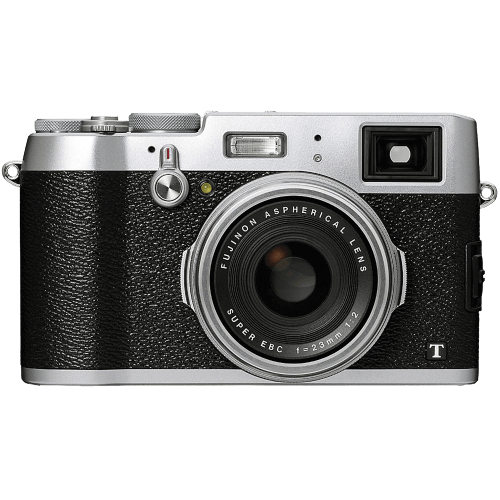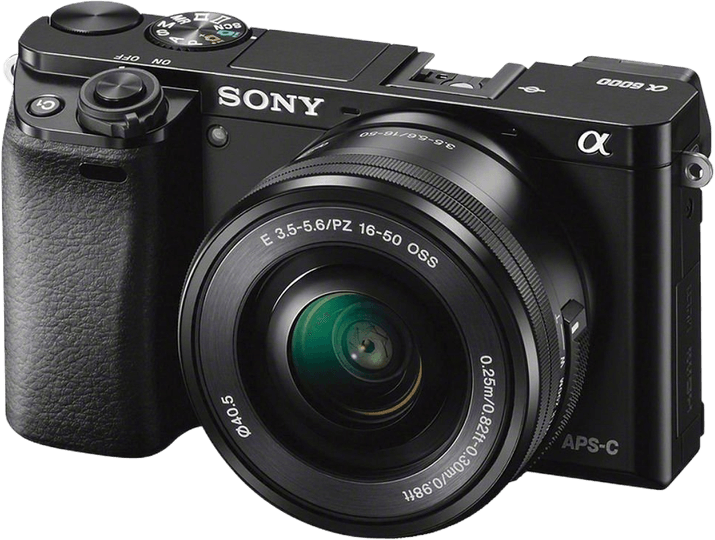Fujifilm X100T vs Sony a6000 Comparison
Fujifilm X100T

Sony a6000

The Sony a6000 outperforms the Fujifilm X100T with a score of 57/100, compared to 53/100. Both cameras are mirrorless and were released in the mid-2010s, with the X100T in 2015 and the a6000 in 2014. They share similar dimensions, but the Sony a6000 has a smaller and lighter body, weighing 344g versus the X100T’s 440g.
The Fujifilm X100T has a higher launch price of $1300, while the Sony a6000 debuted at $799. This difference in price may be an advantage for the a6000. Although the X100T lags behind in score and weight, it may still offer unique features that cater to specific users.
Considering the score, size, and price, the Sony a6000 emerges as the more appealing option for most users. However, individual preferences and needs may lead some to choose the Fujifilm X100T.
Fujifilm X100T vs Sony a6000 Overview and Optics
The Sony a6000 emerges as the winner in the optics comparison with a score of 67/100, surpassing the Fujifilm X100T which has a score of 54/100. Both cameras have certain similarities in their optics specifications. They both feature a CMOS sensor and an APS-C sensor size. Additionally, neither camera offers image stabilization.
The Sony a6000 excels with its higher megapixel count of 24.3, compared to the Fujifilm X100T’s 16 megapixels. This results in better image resolution and detail. Furthermore, the a6000 has a faster shooting speed of 11 frames per second, while the X100T only provides 6 frames per second. The Sony a6000 also benefits from a higher DXOMARK score of 82 for its sensor, indicating superior image quality. Its interchangeable lens mount (Sony E) allows for greater flexibility in choosing lenses for various photography needs.
On the other hand, the Fujifilm X100T uses a fixed lens mount, which can be limiting for photographers who desire versatility in their lens options. However, this may be advantageous for those who prefer a compact camera without the need to carry multiple lenses.
In comparing the optics of the Fujifilm X100T and the Sony a6000, the latter stands out with its higher megapixel count, faster shooting speed, better sensor performance, and interchangeable lens mount. While the X100T may be suitable for photographers seeking simplicity and compactness, the Sony a6000 is the better choice for those who prioritize versatility and higher image quality.
Fujifilm X100T vs Sony a6000 Video Performance
The Fujifilm X100T outperforms the Sony a6000 in video capabilities, scoring 70/100 compared to the a6000’s 56/100. Both cameras share common specifications, such as Full HD video resolution with maximum dimensions of 1920 x 1080 and a maximum video frame rate of 60fps. However, the X100T boasts additional features that contribute to its higher score.
One significant advantage of the Fujifilm X100T is its built-in time-lapse functionality. This feature allows users to create stunning time-lapse videos without requiring additional software or accessories. The Sony a6000, on the other hand, lacks this convenient feature, making it less versatile in terms of video production capabilities.
Despite the lower score, the Sony a6000 does have some positive aspects in its video performance. Its autofocus system is known to be fast and accurate, which can be beneficial for capturing moving subjects or quickly changing scenes. Additionally, its compact size and lightweight design might make it a more suitable choice for users who require a portable and easy-to-carry camera for their video needs.
Taking these factors into account, the Fujifilm X100T stands as the better option for videographers, mainly due to its built-in time-lapse feature. However, the Sony a6000 remains a viable option for those who prioritize autofocus performance and portability in their video recording endeavors. Ultimately, the choice between these two cameras will depend on individual preferences and specific requirements.
Fujifilm X100T vs Sony a6000 Features and Benefits
The Fujifilm X100T emerges as the winner in the features comparison, with a score of 58/100, while the Sony a6000 trails behind with a score of 41/100. Both cameras share several common specifications, such as a 3-inch screen size, flip screen, absence of GPS, and the presence of WIFI. Neither camera has a touchscreen.
The Fujifilm X100T outshines the Sony a6000 in terms of screen resolution, boasting 2,360,000 dots compared to the Sony a6000’s 921,600 dots. This difference results in a clearer and sharper display on the X100T. Furthermore, the X100T also features Bluetooth connectivity, which the Sony a6000 lacks. This addition makes it easier for users to transfer files and control the camera remotely using a compatible device.
On the other hand, the Sony a6000 does not have any significant advantages over the Fujifilm X100T in terms of features. The only aspect where they differ is the presence of Bluetooth, which the a6000 lacks. This does not make the a6000 a better camera in any way but could be considered a minor drawback for users who prioritize Bluetooth connectivity.
Taking into account the feature comparison, the Fujifilm X100T proves to be the superior camera, with a higher resolution screen and the added convenience of Bluetooth connectivity. The Sony a6000, despite having a lower score, still offers decent features and is comparable to the X100T in most aspects, except for the absence of Bluetooth.
Fujifilm X100T vs Sony a6000 Storage and Battery
The Fujifilm X100T and Sony a6000 both score 21/100 in storage and battery, showing equal performance in this aspect. Both cameras have one memory card slot and do not support USB charging. They accept SD, SDHC, and SDXC memory cards, with the a6000 additionally compatible with Memory Stick Pro Duo and Pro-HG Duo cards.
The Sony a6000 outperforms the Fujifilm X100T in battery life, providing 360 shots compared to the X100T’s 330 shots. The a6000 uses an NP-FW50 battery, while the X100T uses a Lithium-Ion NP-95 battery.
On the other hand, the Fujifilm X100T does not offer any advantages over the Sony a6000 in terms of storage and battery. Both cameras have similar specifications, with only a slight difference in battery life.
Considering the storage and battery specifications, neither camera stands out as a clear winner. The Sony a6000 has a slightly longer battery life, but both cameras share similar features and limitations.
Fujifilm X100T vs Sony a6000 – Our Verdict
Are you still undecided about which camera is right for you? Have a look at these popular comparisons that feature the Fujifilm X100T or the Sony a6000:

